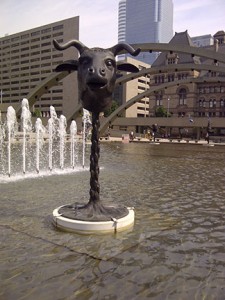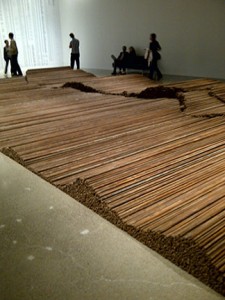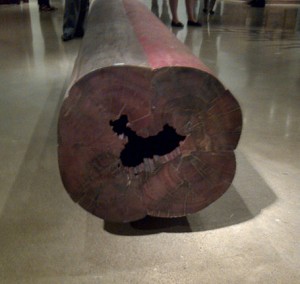Appraising Chinese Glass: A Guide to Objects & Connoisseurship
This article was originally published in the Journal of Advanced Appraisal Studies in April 2019 and Susan has since updated it in May 2022
The three traditional areas of collecting in Chinese art are porcelain, jade and painting. Decorative arts such as glass, lacquer and cloisonné have often been overlooked and underrated by collectors. Specifically, Chinese glass has suffered from this lack of attention, and more scholarly work needs to be done to increase our understanding and appreciation of its beauty and potential value. There are two main reasons to explain this situation: One is the dearth of archaeological evidence, i.e. actual extant early Chinese glass objects. The other factor is the cultural reverence of jade to the detriment of the perception of glass works of art. The focus of this article is the connoisseurship of Chinese glass and the values which certain types of objects are achieving in the current market.
Brief History of Chinese Glass:
In ancient China, the earliest examples of glass discovered are from Zhou period tombs (c.1050-221 BC). Many of these glass artifacts, known as “eye-beads” are in fact Western in origin. Through maritime trade and the Silk route, glass objects from the Islamic world, India and Rome, found find their way to China. Some eye beads were made by the Chinese in imitation of Western ones, and they can be distinguished by scientists according to the higher content of barium. Glass objects were initially cast, and the Chinese did cast some items larger than beads in the Han dynasty (206 BC-220 AD), including ritual bi discs. During the Tang period (618-906 AD) glass in China was being made with both techniques of casting and blowing. Of the handful of Tang blown glass objects offered at auction, consisting of plain bowls and cups, the average price for such items was under $5,000 USD. Excellent examples of Tang period opaque green glass objects can be seen in the collection of the British Museum. During the Yuan dynasty (1280-1368) and Ming dynasty (1368-1644), there are very few ‘native’ Chinese glass artifacts that exist to be studied, as the Chinese definitely seemed to prefer importing foreign painted glass during this time.
Since jade has traditionally been revered by the Chinese as a precious material, it is not surprising that glass objects were not held in as high esteem. Glass was likely regarded as a less expensive substitute for jade and other precious hard stones. However, rare glass objects such as beads were probably only accessible to the wealthiest individuals. Below is an image of a bead found at a Chinese burial site, from the Corning Museum of Glass collection:
This bead, known as the “horned eye bead,” dates to the 4th century BC. It is composed of translucent dark blue, grey, yellow, opaque white, and pale-yellow glass, and was hot-worked by Chinese craftsmen, demonstrating a very complex design and excellent workmanship. However, as noted in Glass Beads, “the high quality of glass bead-making exemplified in this object disappeared at the end of the Zhou dynasty, and Chinese glass beads reverted to simpler forms in the ensuing centuries.” Such beads rarely come up for auction. However, a similar bead was offered by Marchance Auctioneers Ltd. in 2016. That bead is later in date, from the Warring States Period (475-221 BC). Unfortunately, despite the scarcity of such beads and their rare appearance at auction, the bead was Bought In. It is a cliché, but the market really is all about supply and demand, and there is not a great demand for ancient Chinese glass beads. The estimate of $43,750-64,338 US was quite aggressive, which may have been another factor in it being unsold.
Real efforts at glassmaking by the Chinese began in the Qing dynasty (1644-1911). This is the type of glass known as “Peking Glass,” as it was initially made in the capital of Peking [known as Beijing today]. The fourth Qing Emperor, Kangxi (1654-1722 AD), a contemporary of France’s King Louis XIV, was responsible for encouraging new ties with the West, specifically French Jesuit missionaries. Kangxi was open-minded about importing scientific knowledge in the areas such as astronomy, cartography and medicine, as well as the technology of glassmaking. The establishment of the glassworks workshop in 1696 within the walls of the Forbidden City in Beijing, marked an advancement in artistic ambitions in this area. While the Chinese were masters of bronzes, ceramics and jade artistry, glass had been long neglected. With the arrival of the German missionary Kilian Stumpf (1655-1720) in Beijing who had a strong knowledge of kiln construction and method of creating a variety of colours, there was a dramatic improvement in the quality and quantity of glass production. During the Qing dynasty, gold was also introduced in both porcelain glazes and glass making, with great results.
The pinnacle of Chinese glassmaking took place in the 18th century during the reign of the Qianlong Emperor (r. 1735-1796). Below is an example of the cameo-carving technique, featuring ruby glass encasing the inner frosty white glass vase. A master craftsman would have carved through the ruby overlay to expose the white ground to compose the battle scene- hence the name of this object known as ‘The Warrior Vase.’
This vase, which is part of the Corning Museum of Glass collection, is an example of technical virtuosity because of its unusually large size and elaborate decoration. It is ‘cameo glass’ at its finest. The neck and body serve as a canvas to depict a famous battle scene in Chinese history. The inner white body can be described as ‘snowflake glass’ (sometimes also referred to as ‘frosted’ glass). Notice the very high depth of the relief carving. Depth of carving is a factor in terms of quality and value, just as it is with other Chinese decorative objects, such as those made from lacquer.
Colour is one of the most important factors in appreciating glass. While it comes literally in a rainbow of colours, however, egg-yolk yellow is highly valued because of its association with the Imperial family, and ruby red glass is one of the most visually impressive. Glass makers usually copied shapes of porcelain and bronzes.
This rich deep yellow shown below is associated with the Imperial family and has a wheel-carved four-character mark within a square of the Emperor Qianlong. Its provenance is also solid since it was from the Ina and Sandford Gadient Collection.
Carved with warrior scenes like late of the Corning Museum of Glass example, this stunning glass vase sold at Freeman’s auction in March of 2015 for $6,875 USD.
It is interesting to observe how many examples of Qing dynasty Chinese glass echo ancient times with their archaic theme and/or imitation of the colour of jade. The belt buckle, carved with swirling gui dragons, and pair of vases, both dating to the late Qing dynasty, are jade-like green in colour. Imitation is, as the saying goes, the sincerest form of flattery:
Pair of vases. Photo Credit: Collection of the Corning Museum of Glass, Corning, NY, (56.6.5), Gift of Mrs. E.C. Chadbourne
Reverse Glass Painting:
In Chinese art, reverse glass painting uniquely combines the genres of glass making, and the tradition of meirenhua (paintings of beauties). Unlike Peking glass made in the capital in the northern part of China, this art form was predominantly painted in the southern area of China, particularly where the foreign business lived and worked, in Guangzhou. The colours and style of export reverse glass portraits appealed very much to the European taste and fascination with Chinoiserie in the 18th and 19th centuries. This technique is described as: “Painting a design on the backside (often the interior) of a glass vessel. The design is viewed through the glass. Because of this, the pigments must be applied in the reverse of normal order, beginning with the highlights and ending with the background.”
The history of reverse glass painting at the Imperial Chinese court is an extremely interesting one, and it involves another Jesuit priest, the Italian painter Guiseppe Castiglione (1688-1766). He was frequently commissioned by the Qianlong Emperor and whose works are included in the Imperial Palace Collection. It is believed that Castiglione painted one of Qianlong’s concubines in the technique of reverse glass painting. In fact, most reverse glass paintings typically feature a portrait, often of a woman, and are regarded as belonging to the genre of export art. However, in more recent years, export art has begun to be re-evaluated by the academic attention of such scholars as James Cahill. Unfortunately, reverse glass painting has suffered from past opinions of it being “lesser” in quality and value because it is later in date. Astutely noted in the article on the Chiswick Auctions website: “Whilst primarily an export art, its Imperial patronage, technical sophistication and Chinese aesthetics demand that it receives closer academic attention within the canon of Chinese painting art.”
Below is a fine example of two reverse glass paintings of meihuaren:
Photo Credit: Christie’s New York
Each of the paintings depicts a seated lady of obvious wealth and status, with a vase of flowers (one of which is made from transparent glass), and is mounted in a gilt, lacquered frame. Dating to 1775-1825, the pair was sold at Christie’s New York in January 2019 for $20,000 USD, which includes the buyer’s premium.
These examples would be considered at the very high end of the scale of reverse glass paintings in terms of condition, quality and age. The one below is more typical of what appraisers will see in the field:
Photo credit: Chiswick Auctions
This painting, which is filled with erotic subtext, sold for $8,037 USD (includes buyer’s premium), at Chiswick Auctions in November of 2018. Because of this new interest by scholars in reverse glass paintings, prices overall are gaining in strength along with the appreciation of it as an art form.
Snuff Bottles:
Glass was a prolific medium used in the creation of snuff bottles. The timing of the introduction of snuff (powdered tobacco) to China by Portuguese Jesuits in the late 16th century, worked out very well with the establishment of the glass workshop in the 17th century. Due to the humid weather in China, a container with a stopper/seal rather than the European snuff box was needed in order to keep the powder dry. Miniature glass bottles with a stopper were the ideal solution. Snuff was initially only used amongst members of the Imperial family and household, and the bottles were produced in the Imperial workshop for them specifically in mind. Glass bottles proved to be a lightweight, portable luxury good also convenient for gift-giving. As the popularity of snuff spread over the next two centuries, so too did the production of snuff bottles outside of the Imperial workshop in a myriad of materials.
There are several types of glass snuff bottles, including monochrome, painted (outside or inside), cameo or overlay type, mottled, and imitations of other stones. The technique of carving overlay glass (as exemplified in the ‘Warrior Vase’) was commonly used in snuff bottles of the 18th and 19th centuries. Glass snuff bottles produced during the Qing dynasty often imitated semi-precious stones such as realgar, aventurine, and jade.
The example above depicts a finely carved pink glass lotus snuff bottle, dating to the Qing dynasty (1740-1830), featuring a lotus flower with petals and stem, carved in high relief from pink glass, and having incised details of veins. The stopper consists of green aventurine glass, 6.5 cm (2.6 in.) in height. It had a provenance of being from a private American collection and was sold at Galerie Zacke Vienna for $6,389 USD in 2018. This is a very solid price for a superb quality, likely Qianlong period, snuff bottle. It reflects the lower prices being achieved in the past few years, since the generation of collectors who admired snuff bottles is passing away. For the most part, children of the collectors in the 1970s and 80s no longer share their parents’ interest in snuff bottles, and thus there are fewer potential buyers when they come up for auction today. However, there was a time when the sales of the Ruth and Carl Barron Collection of Fine Chinese Snuff, The J&J Collection, and the Mary and George Bloch Collection garnered incredible attention and high prices.
Of all the glass objects in the market today, snuff bottles remain the most collectible and valuable. Records have been set in the past for enamelled glass snuff bottles, such as the most expensive snuff bottle ever sold, a Qianlong-era creation, featuring a rare painted enamel on glass of a European woman, which achieved $HK25,300,000 ($3.2 million USD) at Bonhams Hong Kong in November 2011.
Nineteenth and twentieth-century interior-painted glass snuff bottles are very common for appraisers to encounter. Most interior-painted snuff bottles can be dated to the Daoguang period (1821-50), when this technique of painting bottles became very popular, or later. If the bottle is signed by a well-known artist, then it can often fetch a decent price of a few thousand dollars, even in today’s deflated market for snuff bottles. For example, the inside-painted snuff bottle below sold by Bonham’s New York last year is signed by an artist for whom there are many comparables in art databases, Ye Zhongsan.
Lot #216, Bonhams, New York, sale #24827, March 19, 2018. Ye Zhongsan, 1926. This snuff bottle, which is very finely painted, sold for US$ 2,375, including buyer’s premium.
The overall market for Chinese glass fluctuates because glass is easy to copy. There are many fakes in the market and the Chinese have both a tradition and reputation for making excellent copies. For this reason, as well as the overall decline in the numbers of buyers currently collecting glass items prices for Chinese glass is rather weak. Although excellent examples of glass snuff bottles can still command high prices. In addition, there has been a historical-cultural bias in China against glass, as it was always regarded as “lesser” than jade. Or in the case of export reverse glass paintings, “lesser” than other genres of traditional Chinese painting. Since glassmaking reached its zenith of quality in the Qing dynasty, and it proliferated both inside and outside the Imperial court in the 19th century, it is often regarded not as worthy to collect as jades, porcelain and paintings. The situation with Chinese glass is similar to Republican porcelain. Values for it dramatically increased when collectors were priced out of the Qianlong period porcelain market. So much so, that even Republican porcelains are now being faked. A similar attitude is held towards Chinese glass objects. The market continues to change. In the early 1980’s they were relatively inexpensive because of low demand. However, by the end of the 1980’s the market was improving and glass objects were being sought out at auction. Today, prices achieved at auction depends on the rarity, condition and particularly provenance of an item. There will always be buyers for the very high end of the market. While average pieces may not sell, or sell for modest prices.
The best strategy to hone one’s connoisseurship skills is to study collections in the Museum of Fine Arts in Boston, the British Museum, National Palace Museum in Taipei, Taiwan, and the Corning Museum of Glass in New York. These museums have easy access to their collections online. Take the time to do some research with an open mind. Chinese glass is worthy of a serious second look by appraisers, collectors, and scholars alike in its varied forms- from ancient ritual items, vases and bowls, and reverse glass paintings to snuff bottles.
- While there is no exact date of when glass was first made, it is likely to have been around the end of the third millennium BC, in Mesopotamia. It is also interesting to note that vitreous glazes were already used on ceramics at this time.
- Tait, ed., 5000 Years of Glass, p. 141. Scientists have examined later Chinese ‘native’ glass and noted that it has a higher lead composition than the soda-lime composition of Western glass. In the Tang, the small glass items tended to be figures of Buddha and animals, as well as very practical, plain implements such as bowls.
- P.12, Glass Beads.
- Wednesday, June 1, 2016 [Lot 00313]. Bought In. A Chinese ‘Seven Eye’ Circular Mosaic Glass Bead, from the Warring States Period (475-221 BC). Length 2.3 cm. (1 in.) Width 2.3 cm.
- P. 10, Looking at Glass, defines ‘cameo glass’ as: “Glass made of two or more layers of glass of different colours. During manufacture, the primary layer is covered with one or more layers of contrasting colour, usually by encasing. The outer layers are carved, cut, engraved, sandblasted or acid etched to produce a design in relief, and the primary layer serves are the background colour for the design.”
- From the Corning Museum of Glass website: “The elaborate scene on this vase illustrates an episode from the legend of the Song-dynasty general Yue Fei (1103-1141). Four Song warriors fight with hammers against a single enemy, a soldier of the Jin dynasty who is armed with two spears. The fight ends in a draw, but the brave Jin soldier later learns that he is the son of a Song general who had been killed by the Jin. This moment of revelation is set in a pavilion that is shown in the background of the scene on the vase.”
- March 12, 2016 [Lot 00282]. Height 7.8 in. (19.7 cm).
- P.73, Looking at Glass.
- Christie’s New York: Thursday, January 17, 2019 [Lot 00562], each 17 ½ x 12 ¾ in. (44. X 32.4 in.) from the sale of Chinese Export Art, Featuring the Hodroff Collection, Part IV.
- Circa 1700-1799, 10.2 x 7.9 in. (26 x 20 cm.) November 12, 2018 [Lot 00249].
- Galerie Zacke Vienna, Friday June 15, 2018 [lot 00041], $5,500 Euro (Hammer)
- Of rounded rectangular form, the sloping shoulders rising to a flared neck and flat lip, an oval foot ring enclosing a convex foot, the inside painted with a continuous scene of a mossy bank, with insects resting on rocks and hovering by a willow tree over a school of fish, dedicated to Lisheng, dated bingyin liuyue (1926, fifth month), and signed Ye Zhongsan with a painted seal reading yin. 2 3/8in (5.9cm) high
Bibliography:
A Chorus of Colors: Chinese Glass from Three American Collections (San Francisco: Asian Art Museum, 1995).
Byrne Curtis, Emily. “A Plan of the Emperor’s Glassworks”, Arts Asiatiques, Vol. 56, 2001. pp. 81-90.
https://chiswickauctions.co.uk/chinese-reverse-glass-painting, “Through the Looking Glass: Chinese Reverse Glass Painting,” April 11, 2016.
The Corning Museum of Glass: A Guide to the Collections, The Corning Museum of Glass, Corning, New York, 2001.
Gennett, Adrienne V. Glass Beads: Selections from The Corning Museum of Glass, New York, 2013.
Hess, Catherine. Looking at Glass: A Guide to Terms, Style and Techniques. The J. Paul Getty Museum, Los Angeles, 2005.Tait, Hugh, ed., Glass: Five Thousand Years. New York, 1991.





